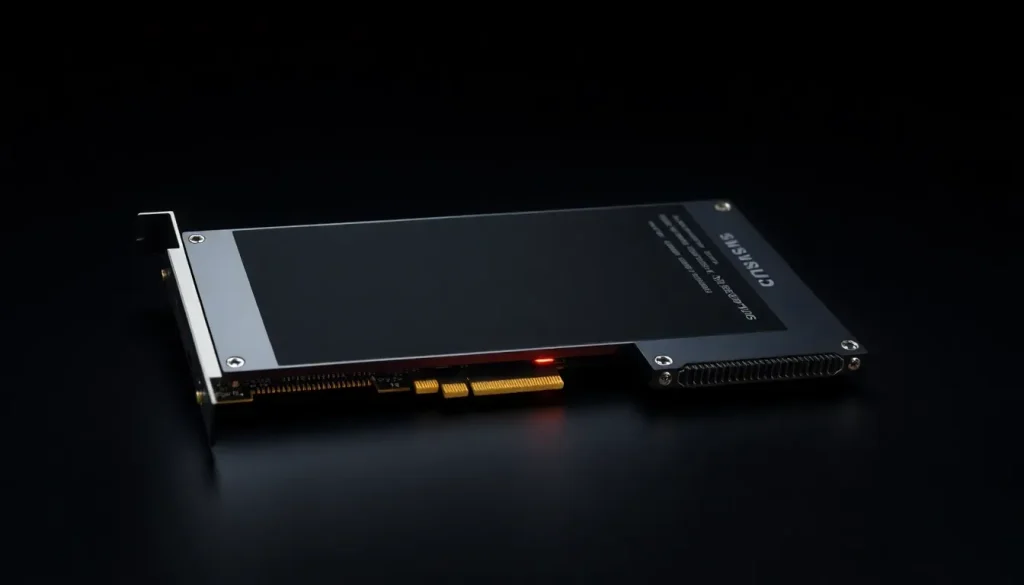Samsung preparing to launch professional PCIe 6.0 SSDs in 2026

As technology continues to evolve at a breathtaking pace, the demand for faster, more efficient storage solutions has never been more critical. Samsung is stepping up to meet this challenge with its upcoming PCIe 6.0 SSDs, which promise to redefine the standards of enterprise storage. With capacities soaring and speeds reaching unprecedented levels, these innovations are set to transform data centers and high-performance computing.
At the recent Global Memory Innovation Forum in China, Samsung unveiled its ambitious roadmap for enterprise SSDs, highlighting the introduction of Gen 6 SSDs slated for 2026. The anticipation surrounding these products is palpable, particularly because they are expected to deliver exceptional performance metrics that could revolutionize the way businesses handle data.
Key Features of Samsung's Upcoming PCIe 6.0 SSDs
One of the standout products from Samsung is the PM1763, a PCIe 6.0 SSD designed for servers and data centers. This drive is engineered for speed, boasting an impressive 30GB/s transfer rate. The form factor of the PM1763 is the E1, making it an ideal choice for high-throughput tasks. These include:
- Caching
- Data analysis
- Virtualization
- High-frequency trading
What sets the PM1763 apart is its ability to enhance the performance of existing slower storage units. By acting as an intermediary between slower drives and the main system memory, it optimizes overall system responsiveness and efficiency.
Technological Innovations Behind the PM1763
To achieve these remarkable speeds, Samsung has implemented a cutting-edge 16-channel controller. This new controller doubles the data transfer speed compared to existing solutions, establishing a connection to the CPU via a PCIe 6.0 x4 link. Notably, the 30GB/s transfer speed represents the upper limit of what is achievable on this interface, signaling a significant leap forward in SSD technology.
For context, the previous generation of SSDs, Gen 5, took considerable time to reach their optimal performance levels. Early models in the consumer segment, for instance, faced challenges related to power consumption and thermal management. Samsung's PM1763, however, comes with a power consumption of just 25W, making it 60% more efficient compared to its predecessors.
The Competitive Landscape: Samsung vs. Micron
In a rapidly evolving market, the PM1763 will face stiff competition from other manufacturers, notably Micron’s 9650 SSD. Micron's offering is no slouch either, promising speeds of up to 28GB/s for sequential reads and 14GB/s for sequential writes. This competitive rivalry will be crucial, as factors such as pricing and total cost of ownership (TCO) will heavily influence purchasing decisions among enterprises.
Key comparisons between the two SSDs include:
| Feature | Samsung PM1763 | Micron 9650 |
|---|---|---|
| Max Sequential Read Speed | 30GB/s | 28GB/s |
| Max Sequential Write Speed | N/A | 14GB/s |
| Power Consumption | 25W | N/A |
Future-Proofing Data Centers with High-Capacity SSDs
In addition to the PM1763, Samsung is also planning to introduce super-high-capacity SSDs that utilize QLC NAND technology. These drives will support capacities of up to 256TB at Gen 5 speeds and 512TB at Gen 6 speeds, expected to launch in the coming years. Such substantial capacities are invaluable for:
- Densely packed server clusters
- Lower maintenance costs per terabyte
- Improved data management strategies
The advent of these high-capacity SSDs could mark a significant turning point in the storage market, particularly as traditional HDDs struggle to keep pace. While HDDs currently face challenges in exceeding the 40TB mark, the introduction of SSDs with 512TB capacities could effectively make them obsolete.
Market Readiness for PCIe 6.0 Technology
Despite the excitement surrounding these advancements, it's essential to note that the widespread adoption of PCIe 6.0 SSDs may take some time. The requisite CPU and motherboard technology to support this new standard has yet to be released. Currently, Gen 5 M.2 SSDs remain more than sufficient for most home and creative applications, with many popular games and software not fully harnessing their capabilities.
However, as data storage demands grow, particularly in enterprise environments, the introduction of larger-capacity solutions will likely become a priority. The prospect of a 256TB SSD is enticing, especially for organizations grappling with the limitations of current storage technologies.
The Broader Impact of Samsung's Innovations
Samsung's ambitious plans for PCIe 6.0 SSDs and high-capacity storage solutions reflect a broader trend in the technology landscape. As businesses increasingly rely on data-driven strategies, the need for fast, reliable storage options will continue to grow. The introduction of these advanced SSDs presents an opportunity for companies to:
- Enhance operational efficiency
- Minimize latency issues
- Facilitate innovative applications in AI and big data
In conclusion, while the excitement around Samsung's upcoming PCIe 6.0 SSDs is palpable, the implications of these innovations extend far beyond mere performance metrics. They represent a fundamental shift in how data is stored and accessed, paving the way for a new era of computing.




Leave a Reply